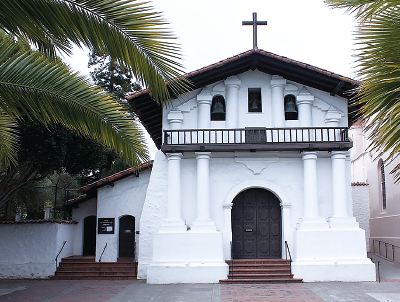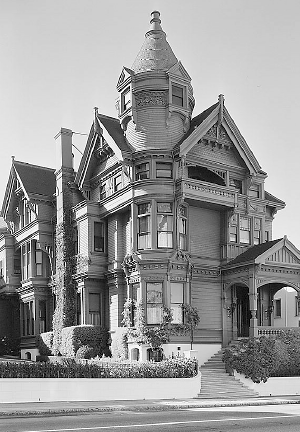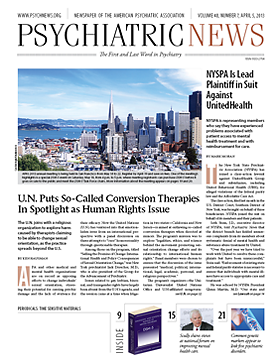San Francisco is divided by history, ethnicity, and even climate into many enclaves, and astute attendees at APA’s annual meeting might build in a little downtime away from those enticing scientific sessions to see what the rest of this picturesque city looks like.
From Pacific Heights to the Mission District, neighborhoods not far from the Moscone Center offer dramatically different glimpses of the city’s past and present.
For a start, great views of the city and its surroundings are visible from Alta Plaza Park, at the corner of Jackson and Steiner streets, or the steps at Broadway and Lyon Street near the Presidio.
Pacific Heights is bordered by Pine and Vallejo streets and Van Ness and Presidio avenues. Home to many of San Francisco’s wealthiest residents, the area includes many buildings erected before the 1906 earthquake and fire. The Victorian mansions of Pacific Heights have been described as both “extravagant” and “elegant,” subjective testimonies to the spare-no-expenses tastes of their first owners, the newly rich of the late 19th century who sought to outdo each other.
For instance, the Leale House at 2475 Pacific Avenue is one of the city’s oldest houses, probably built as early as 1853 as the main house for a dairy farm.
The Haas-Lilienthal House, built in 1886 at 2007 Franklin Street, is a well-preserved example of Queen Anne-style Gilded Age architecture, replete with authentic period furnishings. The National Trust for Historic Preservation last year named the house one of 34 National Treasures. The house, home to San Francisco Architectural Heritage, is open to the public, and tours take place on Wednesday, Saturday, and Sunday afternoons.
Visitors with more modern cultural interests will want to see the house at the corner of Broadway and Steiner Street that was used as the exterior for the movie “Mrs. Doubtfire,” or the early 20th century Spreckels Mansion at 2080 Washington Street, where novelist Danielle Steele keeps house.
Fillmore Street bisects the neighborhood and is Pacific Heights’ high-end shopping district, the place to pick up everything from designer clothes to the latest in home décor.
Just north of Pacific Heights lies Cow Hollow, named for the small dairy farms that covered the little valley in the 1860s. The cows were sent off to greener pastures in 1891 by the city board of health, and the area turned into a mixture of homes and shops.
Despite the bovine absence, the farmhouse built by dairy rancher James Cudworth still remains at 2040 Union Street, while the two identical Victorian houses he built as wedding presents for his two daughters stand at 1980 Union.
In the 1950s, Cow Hollow was discovered by a new wave of antiques dealers and home-furnishing store owners. Today, the 1800 to 2200 blocks of Union Street present a mixture of old Victorian homes redone as shops selling clothes, art, books, specialty foods, and heaven knows what else. Restaurants serving Vietnamese, French, Italian, Irish, Japanese, Mexican, and other national cuisines dot the area too.
The Mission District takes its name from the Mission San Francisco de Asis, better known today as Mission Dolores, at the corner of Mission and 16th streets. The mission was built in 1776 and is both the oldest original intact mission in California and the oldest building in San Francisco.
The basilica is more than a landmark and remains the home of an active Roman Catholic parish, with services in English and Spanish.
The district around the church has undergone a mixed renaissance in recent years. The area was home to Mexican, Salvadoran, Nicaraguan, and other Central American immigrant families beginning in the 1950s, and their cuisine and culture are manifest throughout. That Latin tapestry also was interwoven with many bohemian and artistic threads. Then young professionals discovered the area during the dot-com boom of the 1990s, pushing real estate prices up (and some longtime residents out). The inevitable hot new restaurants and boutiques sprouted in the neighborhood. Today, a truce reigns. The area along 24th Street maintains its traditional Latino character, while the hipness quotient rises as one heads toward 16th and Valencia streets.
The Mission District also boasts some of the best weather in a city where climate actually changes from neighborhood to neighborhood. That may be another incentive to stroll about and see the area’s many murals. The Precita Eyes Mural Arts and Visitors Center offers tours on Saturdays and Sundays. ■


